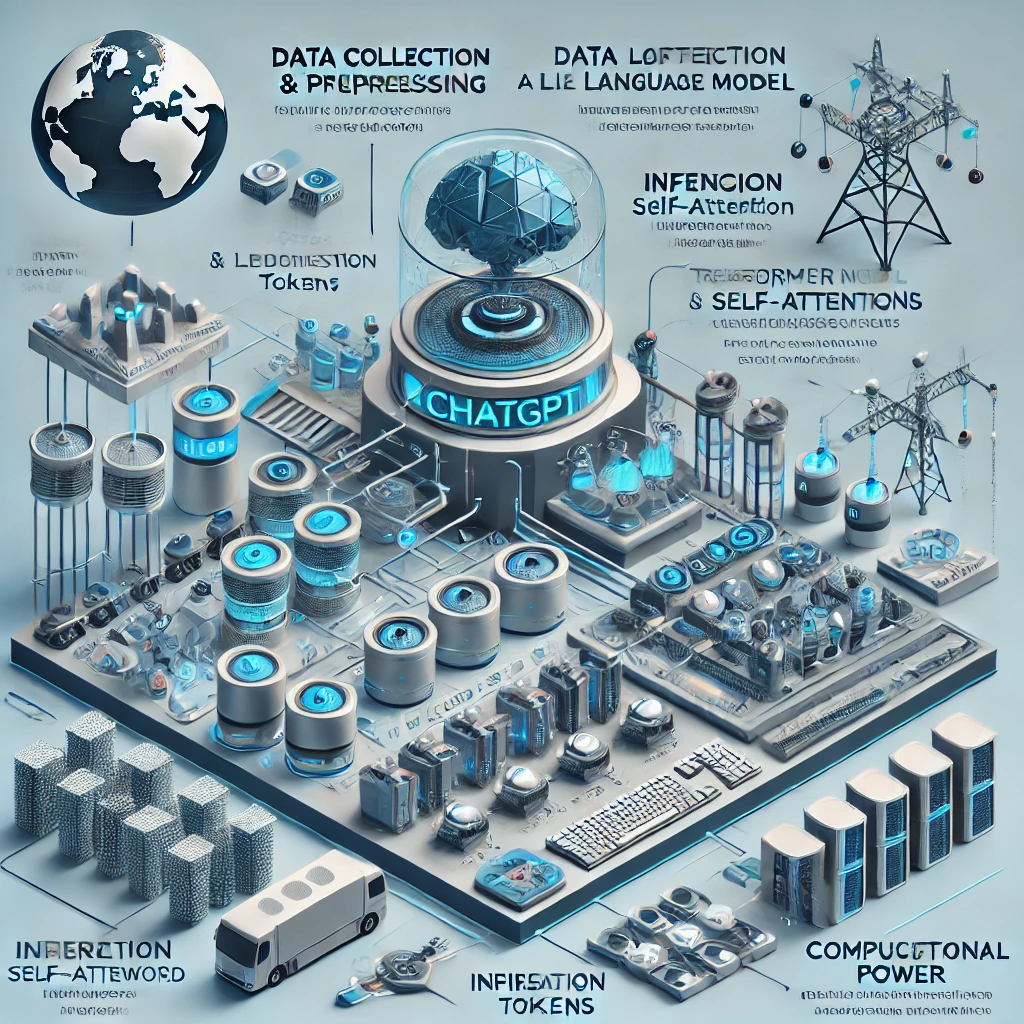This is a summary of the Youtube video presented by Andrej Karpathy which deep dives into the LLMs and help to gain insights of the LLMs/ChatGPT.
It’s highly recommended to watch the whole video if you are a beginner and curious about LLMs.
Introduction
Large Language Models (LLMs) like ChatGPT have redefined how we interact with AI. From answering complex questions to generating creative stories, LLMs showcase remarkable abilities. But how exactly are they built?
In this blog, we’ll explore the technical pipeline of LLMs, including data collection, training, tokenization, transformer architecture, and fine-tuning techniques — all in a way that’s accessible yet thorough. Whether you’re a machine learning enthusiast, a software engineer, or just curious, this is your complete guide.
1. What Are Large Language Models?
Large Language Models are AI systems trained on massive datasets of human text. They learn to predict the next word (or token) in a sequence, allowing them to generate coherent and contextually rich outputs.
Popular examples include:
- OpenAI’s ChatGPT (GPT-3, GPT-4)
- Google’s Gemini
- Meta’s Llama 3
Core Idea:
LLMs simulate the flow of text on the internet, compressed into billions (or even trillions) of learned parameters.
2. How LLMs Like ChatGPT Are Built
Building a capable LLM involves multiple stages: pre-training, tokenization, architecture design, and fine-tuning.
2.1 Pre-Training Stage
📚 Data Collection
The process starts with scraping and filtering massive amounts of text from the internet. Common sources include:
- Common Crawl datasets (billions of webpages)
- Wikipedia
- High-quality curated sources like FineWeb (44 TB of filtered text)
Note: The goal is to maximize quality, diversity, and language coverage while aggressively filtering spam, malware, adult content, and sensitive information (PII).
🛠️ Data Preprocessing
Key filtering steps:
- URL filtering (removing bad domains)
- Language detection (e.g., 65%+ English)
- Text extraction (HTML → pure text)
- De-duplication and PII removal
Even after all this, datasets often amount to only 40–50 terabytes of useful text!
2.2 Tokenization Process
Before feeding text to neural networks, it must be tokenized:
- Text is split into small units called tokens.
- A vocabulary of ~100,000 tokens is typically used (e.g., in GPT-4).
- Techniques like Byte Pair Encoding (BPE) optimize tokenization, balancing sequence length and vocabulary size.
Example:
Input: Hello world
Tokens: ["Hello", " world"]
Different spacings or capitalizations lead to different tokenizations!
2.3 Transformer Neural Network Architecture
The backbone of all modern LLMs is the Transformer architecture, introduced in 2017.
Key Components:
- Self-Attention Mechanism: Models how different words relate across a sequence.
- Multi-Layer Perceptrons (MLPs): Processes contextual embeddings.
- Layer Normalization, Softmax Layers, and more.
Each Transformer layer processes token embeddings through these modules, eventually predicting the next token with higher accuracy.
For a deep dive: Transformer Architecture Explained
2.4 Inference: How LLMs Generate Text
Once trained, the model enters inference mode:
- A prompt (prefix of tokens) is given.
- The model predicts the next most likely token based on learned probabilities.
- Sampling methods introduce randomness, making generations diverse.
Important to note:
Inference is stochastic — running the same prompt twice can yield slightly different outputs.
3. Fine-Tuning: Turning Base Models into Assistants
Base LLMs are powerful but not immediately useful — they simulate internet text rather than answer questions helpfully.
Thus, a second stage called post-training (fine-tuning) is performed:
- Train on instruction datasets made by human labelers.
- Simulate conversations with formats like:
[User]: What is 2+2? [Assistant]: 2+2=4. - Teach the model to be helpful, honest, harmless (the “Three H’s” principle).
Popular methods:
- Supervised Fine-Tuning (SFT)
- Reinforcement Learning from Human Feedback (RLHF)
Example dataset sources: OpenAI’s InstructGPT, Meta’s Llama 3 Chat.
Learn more: Fine-Tuning LLMs: A Comprehensive Guide
4. Infrastructure and Compute Requirements
Training a model like GPT-4 requires massive hardware resources:
- GPUs like Nvidia H100s ($3/hour each)
- Clusters of thousands of GPUs
- Data centers spanning hundreds of racks
For instance:
- Training GPT-2 in 2019 cost ~$40,000.
- Today, training GPT-4-like models costs tens of millions of dollars!
Cloud providers like Lambda Labs or CoreWeave now allow researchers to rent H100 machines for model training.
5. Challenges and Sharp Edges
Despite their power, LLMs have limitations:
- Hallucination: Confidently making up wrong information.
- Regurgitation: Memorizing and spitting out training data.
- Bias and Toxicity: Reflections of internet biases.
- Compute Hunger: Enormous carbon footprint and hardware needs.
Model developers must carefully audit, align, and fine-tune systems to make them safe and useful.
6. Conclusion
Large Language Models like ChatGPT are marvels of engineering, combining clever data processing, neural architecture design, and massive computational efforts. Understanding the pipeline behind them not only demystifies how they work but also shows why creating powerful, safe AI is so challenging.
As we move into an era where LLMs power search engines, virtual assistants, creative tools, and even coding companions, grasping these foundations becomes ever more critical.
Stay curious, stay critical — and maybe even build your own LLM someday! 🚀
Want more deep dives like this? Subscribe to the blog for regular updates on AI, Machine Learning, and LLM research!

